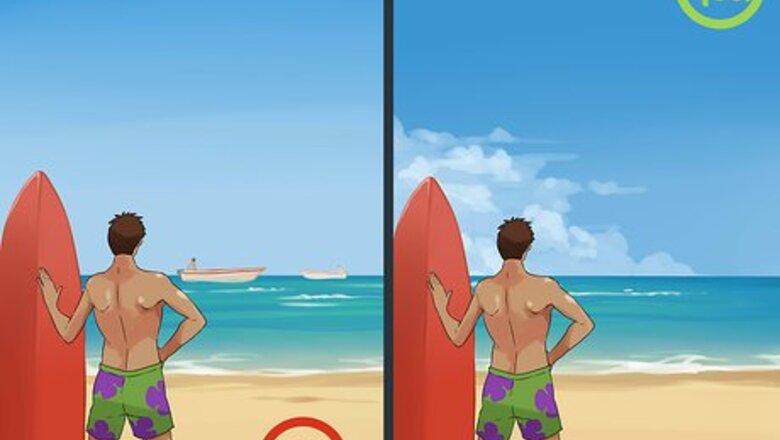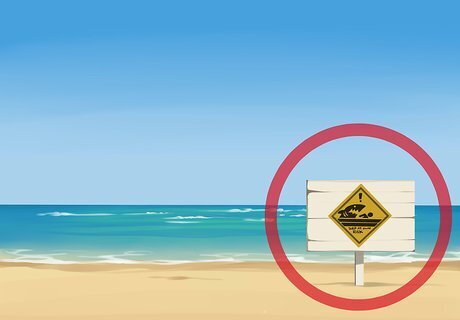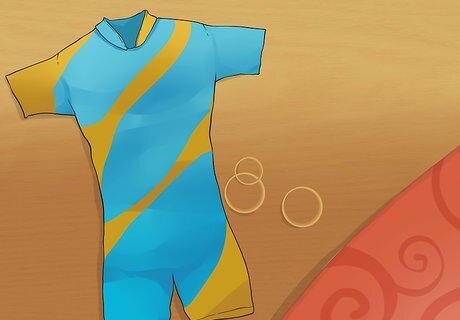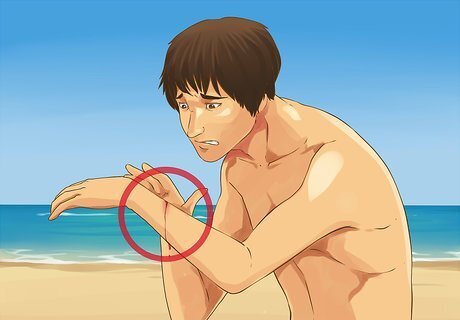
views
Choosing a Safe Place to Surf

Avoid areas where sharks are likely to feed. There are the obvious spots, like near fishermen or fishing boats, where bait, injured fish, and blood and guts are plentiful and may attract sharks. Other potentially dangerous areas include: River mouths and channels. This is where food, dead animals, and fish that are flowing down-stream enter the ocean, making them great spots for sharks to hang out. Areas where sewage enters the water. The sewage attracts fish, which will attract sharks. Deep channels, near sandbars, or where the reef or sand drops off steeply. Sharks lurk in these areas to catch fish that wander out of the shallows. Where large groups of shark prey hang out. If there are seals pupping nearby or a population of other marine animals in the area, sharks may be hunting nearby and could easily confuse you with prey.

Look for warning signs. If sharks have recently been sighted, there should be warnings posted on the beach - heed them. If the beach is closed, come back another day.

Stay out of the water during prime hunting times. Sharks generally feed at dawn, dusk, and night, so stick to late morning or afternoon sessions.

Avoid murky water. Most shark attacks occur because the shark confused a surfer with prey. Visibility is low in cloudy water, making it more likely a shark will confuse you with a seal and attack. Water can be especially murky following storms or heavy rainfall. Rain can also stir up baitfish and attract sharks.

Consider surfing in areas dense with kelp. Some sharks, especially adult great whites, tend to avoid kelp forests.

Take a break during the month of October. Again, it's highly unlikely you will ever see a shark, but some experts believe that some sharks migrate closer to land during October, possibly to give birth. So, if you're really anxious about having a run-in with a shark, maybe wait until November to break out the wetsuit.
Surfing Safely

Surf with friends. Instead of surfing alone, surf with a buddy or a group of people. Sharks target individuals and are less likely to approach a group. Surfing with a friend increases the chances of your survival, in the unlikely event a shark attack occurs. Most shark attack fatalities are due to not getting help fast enough. A friend who can get you out of the water and notify the lifeguard could save your life.

Avoid looking like prey. Sharks can't see colors, but they can see contrast (like a black and white swimming suit). Shiny objects may catch the light and resemble fish scales. Remove all jewelry before entering the water and stick to wetsuits and swimsuits in solid, bland colors. Yellow, orange, white, and flesh-colored suits should be avoided. If you have a high-contrast tan (areas of your exposed skin are very dark, while other areas are very white), wear a suit that covers those white areas, so you appear uniform in color.

Don't enter the water with any cuts or open wounds. If you get injured while surfing and start to bleed, get out of the water. A little blood in the water can attract sharks from up to 1/3 of a mile away. Some experts also recommend women take a break from surfing during menstruation. Though it is unlikely sharks associate the blood discharged during menstruation with feeding, the other fluids in the discharge may arouse a shark's curiosity.
Encountering a Shark

Remain calm. Sharks are attracted to thrashing--they equate those movements with wounded prey--and can sense fear, both of which can send them into attack mode. Try to keep your wits about you so you can make smart decisions and prepare to defend yourself.

Get out of the water. If the shark is nearby and hasn't attacked, move toward the shore as swiftly and quietly as you can, using smooth, rhythmic strokes. Try to keep the shark in your sights at all times. If you notice the shark is displaying aggressive behavior (erratic movements, a hunched back, or quick turns), move as quickly as possible to a rock, nearby kelp canopy, or shore.

Try to use your surfboard as a buffer. Get it between you body and the shark and use it as a shield, protecting your front and sides. The surfboard's buoyancy can prevent a shark from dragging you deep under the water, should it attack.

Defend yourself aggressively. If the shark does attack, don't play dead. Use your surfboard as a weapon. Try to avoid using your hands if possible, since you may injure them on the shark's teeth. Aim your blows at the shark's eyes, gills, or nose.

Get out of the water and seek immediate medical attention if attacked. Your life depends on swift medical attention. Scream for help, send a friend to get the lifeguard and call 911, do whatever it takes to make sure help is on the way as soon as possible.


















Comments
0 comment